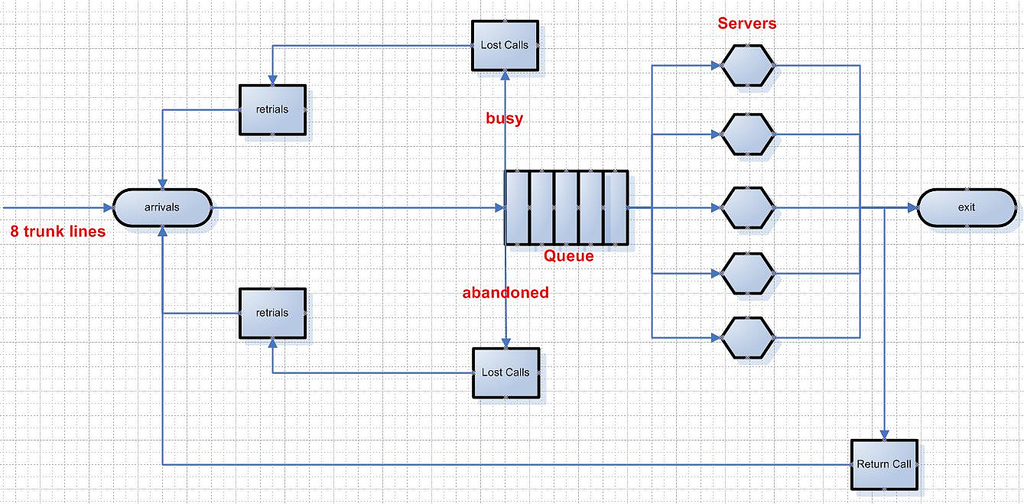It’s clear that a Call Center is a Queue. You can also view all 40+ articles on Queueing Theory.
The flow of calls begins with K trunk lines that connect to the Call Center. There are w ≤ k work stations, or seats, at which N ≤ w agents serve incoming calls. An arriving call that finds all k trunk lines occupied (let’s assume there are 8 trunk lines), receives a busy signal and is blocked from entering the system. Else, it is connected to the Call Center and occupies one of the free lines. If fewer than N agents are busy, then the call is routed directly to an agent and is served. But, if there are more calls in the system and all agents are occupied, then the call waits in the queue until an agent serves a call and that call exits the system. Once the call is served, the resources are released — trunk line, agent, work station.
Some calls are considered retrials, because they are not served and attempt to re-enter the system. For some calls, the customer voluntarily abandons the call and does not call back. Also, customers that are served may attempt to re-enter the system; this happens sometimes if there was no first call resolution (for customer service centers) and/or if the customer needed to order something else (for inbound order centers).

Given the simple system above, the number of trunk lines acts as an upper bound (k). The number of agents acts as an upper bound on how many simultaneous calls can be in service simultaneously. A Call Center manager dynamically changes the number of agents on and off the floor based on expected demand and staffing availability.
Call Centers and other operation centers like it are highly complex and dynamic. The model above is a very simple system (read: simplistic). But, it’s easy to see how Call Centers are Queues and all the tools that Queueing Theory makes available to us can be applied to Call Centers.
There is much I have not discussed in regards to Call Centers. There is much I can say, still, about Call Center terminology, mechanics, mathematics, metrics, how to reduce costs at a Call Center, and the applicaion of Erlang C in most Call Centers and how Erlang C isn’t a very good model. I’ll discuss all these at a later time. For now, just bask in the glory of knowing that Call Centers are, indeed, Queues.









No responses / comments so far.